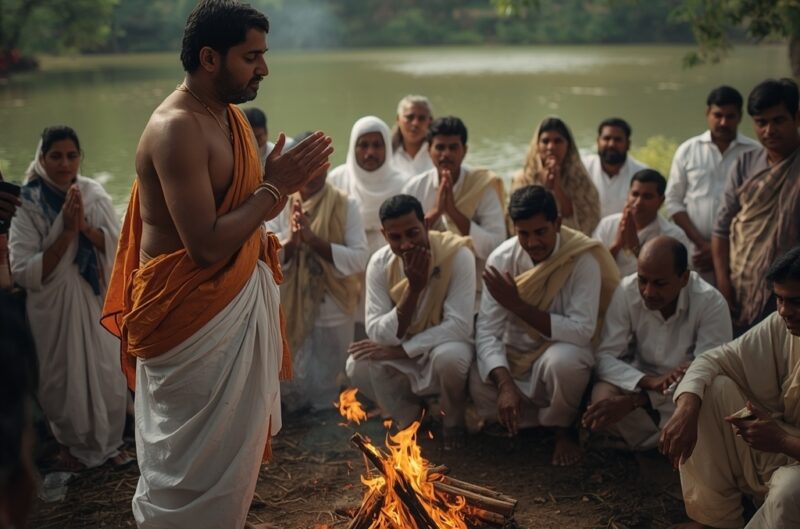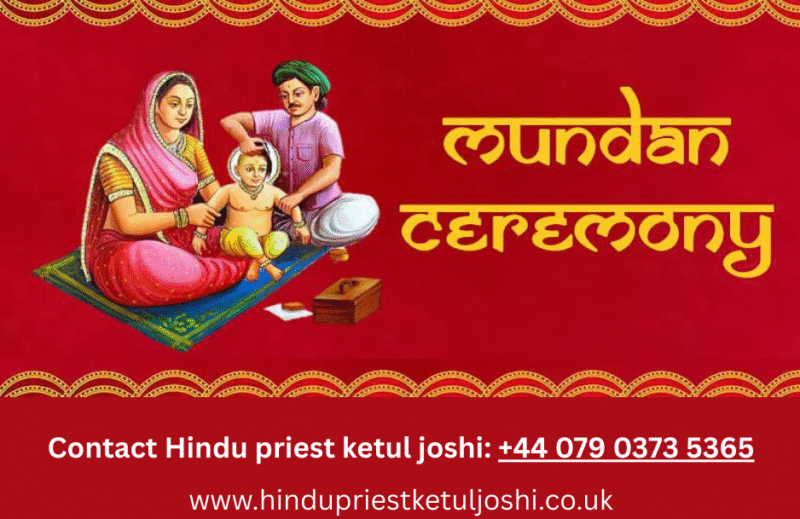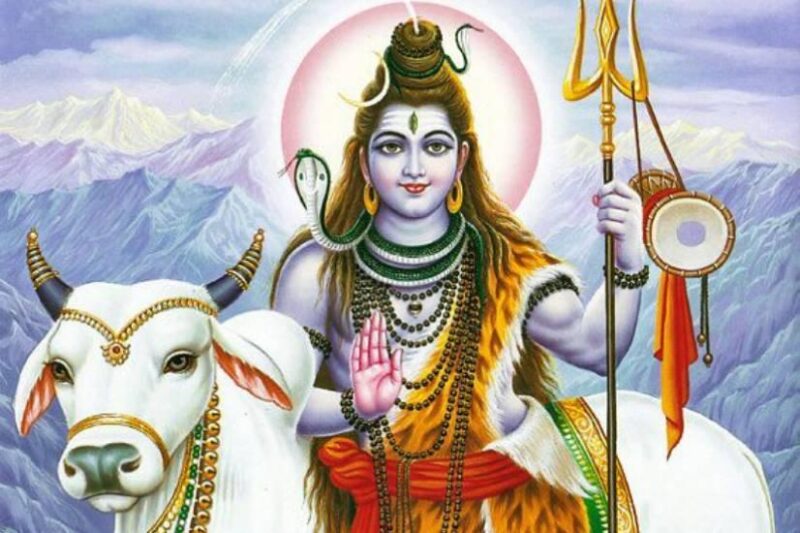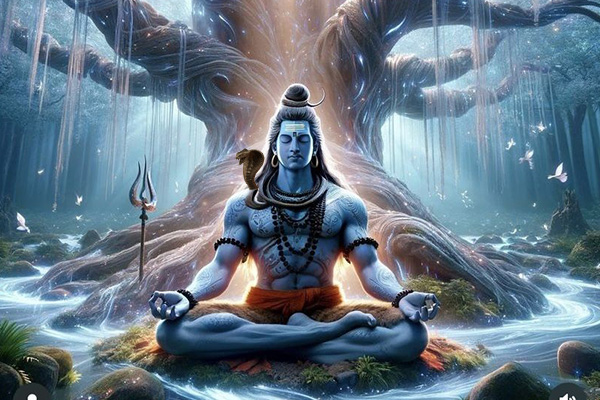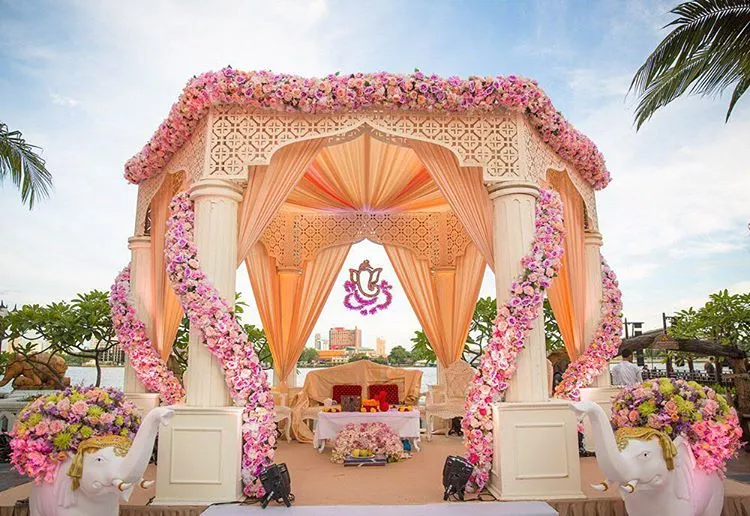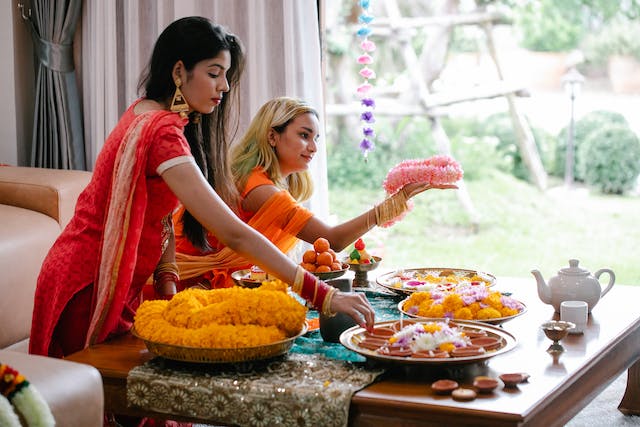A short Hindu wedding ceremony
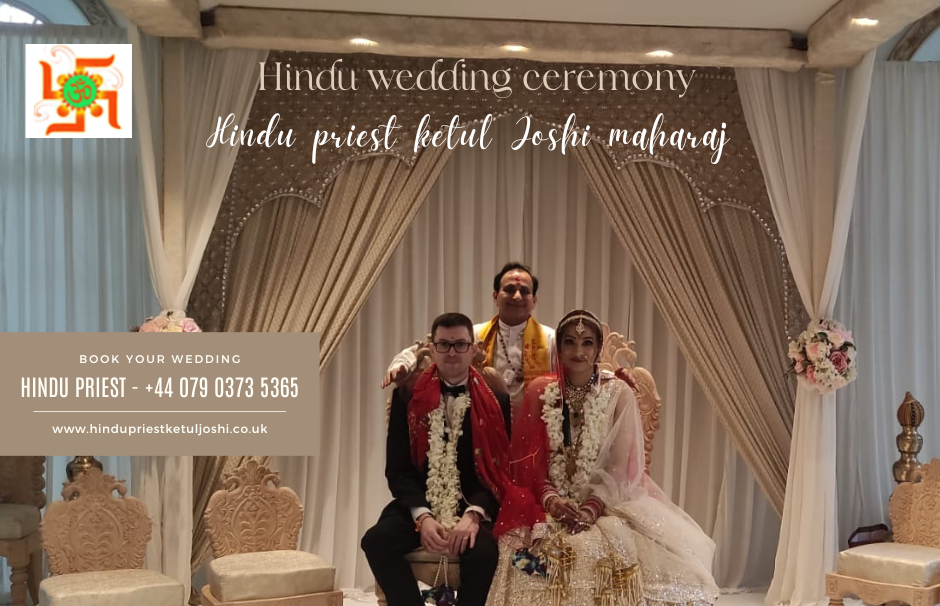
A short Hindu wedding ceremony
Generally, Traditional Hindu wedding ceremonies last four days, Hindu wedding ceremony involves many Traditions in Sanskrit which may be understood only by the Hindu priest conducting the service. but now it’s not Like that everyone wants to understand the meaning of every mantra and tradition which is performed by a Hindu wedding priest. In foreign countries Like the UK, USA, and Australia people want a Hindu priest for their wedding ceremony who can speak English so everyone can understand and enjoy the ceremony. If you are in Uk and you are looking for the best Hindu wedding priest then call Ketul Joshi Maharaj. he can explain the Hindu wedding ceremony in English, Hindi, and English as well.
The Hindu wedding ceremony depends on the clients if they want to keep it short then we can do it short and if they want to keep it long we can do it as well. This ceremony is considerably shorter and is intended to be understandable even to a non-Indian audience, making it suitable for intercultural or mixed Hindu/non-Hindu marriages. The couple for whom it was originally written based it on the Gujarati Hindu wedding priest traditions of the bride’s family with a few touches from Unitarian and secular wedding services familiar to the groom’s family. It includes three spots to insert optional readings and musical performances of your choosing.
The Hindu priest Uk/wedding priest in this ceremony need not be formally trained as a Hindu priest. He or she should be familiar with Hindu weddings and comfortable acting as a master of ceremonies, guiding the participants through their parts and explaining the meaning of the service to the audience. It’s okay if the wedding priest keeps the script in hand during the Hindu wedding ceremony.
Hindu wedding ceremonies are supposed to take place outside, on the earth, under a canopy known as a mandap. If that’s not possible, you can build a mandap inside and pretend you’re outdoors. Seating under the mandap can be on the ground (carpets or mats would be a good idea) or on chairs.

Front and center under the mandap is the sacred fire. The fire can be small and confined to a brazier or dish for safety.
The groom’s party is supposed to arrive at the wedding spot in a procession, so it’s good to have a convenient assembly location nearby.
Traditionally, In the Hindu wedding ceremony, the bride wears a red or red and white saree. The sari should be draped modestly over her hair. The groom wears a kafni (long shirt extending to the knees) with pajama (leggings) or dhoti (sort of an overgrown loincloth). The groom might also wear a turban.
One rule which shouldn’t be broken is that anyone who enters the mandap or wedding canopy must have on sandals or slip-on shoes which can be easily removed (no shoes in the mandap!). In addition, it’s a good idea to avoid much black in the Hindu wedding ceremony.
One feature of the bride’s wardrobe which has become popular abroad is the use of henna or mehndi to decorate her hands and feet. The mehndi is the pre-wedding event where, traditionally, the bride and many of her loved ones will have henna applied to their hands and possibly feet.
The mehndi ceremony is hosted by the bride’s family and typically takes place a day or two before the wedding. This tradition is supposed to bring the bride good luck and good health.
It’s also said that you can tell how well a new bride is being treated by her in-laws from how long it takes for the mehndi to wear off. Mehndi treatments are increasingly available in salons or you can get mehndi mix at any Indian grocery store for a do-it-yourself job. (But be sure to practice on paper first! Mehndi doesn’t wash off.)
The wedding day starts with the Baraat, the all-singing all-dancing wedding procession of the groom and his family. The Baraat can and often does include luxury cars, booming music, and a horse.

The groom leaves his home with his baraat (wedding procession) heading towards the wedding venue with his friends and relatives in tow. Once at the venue, the precession will commence will dhol players, a band, or both to announce the arrival of the groom, his family, and his friends.
The bride’s family formally welcomes the Groom, his family & friends. The Bride’s mother applies a tilak on the Groom’s forehead and then escorts the groom, his family, and friends into the venue. He is then led inside and the priest performs a brief ceremony. Following this, the mother of the bride grabs the nose of the groom playfully to remind him that it is he who has come to their home to ask for the hand of her daughter and he must make every effort to keep her daughter in good humor and comfort always.
The Groom will then be asked to smash a clay pot with his foot breaking it into pieces. This demonstrates that he has the power to overcome all the obstacles the couple may face in their married life. The groom is then escorted to the Mandap.

Before the ceremony begins, the Hindu Priest invokes Lord Ganesh, the Hindu elephant God that removes all obstacles, as a precursor to nuptials about to take place. The Ganesha Puja is performed by the Bride’s parents, the ceremony begins by offering a prayer to Lord Ganesh requesting peace and harmony to prevail during the ceremony. Lord Ganesh’s blessings are sought for an auspicious beginning for the couple. Traditional Indian weddings are incomplete without Ganesh Puja.
The Bride’s parents perform a ceremony where they wash the Groom’s feet and offer flowers and Madhuparka. It is stated in the Vedic scriptures that at the time of marriage the groom is a representation of Lord Vishnu. At the end of the ceremony, a veil of cloth (Antarpat) is held in front of the groom to prevent him from seeing the bride as she enters.
After the groom is in position in the mandap, the bride comes out carrying the groom’s garland, escorted by the maternal uncle.
at that time Hindu wedding priest Uk/wedding priest says:
We have come together to wed (bride), daughter of (bride’s parents), to (groom), son of (groom’s parents). Today they build together the foundation of their marriage upon the earth, in the presence of the sacred fire and the radiant sun, among their family and friends.
The bride and groom are seated facing one another under the mandap. The chorus sings the slokas:
Invocation to Lord Ganesha by wedding priest: Vignesh varaia varadaia sukhapriyaya…
Invocation to Saraswati by wedding priest: Yakundendutusharahara dhawala…
Prayer for harmony: Om sahana vavatu…
The bride garlands the groom. Groom garlands bride.
Bride’s parents wash the bride’s and groom’s hands and feet, apply kumkum and give flowers. (Bride’s mother does this to the bride and the bride’s father to the groom.)
Bride’s parents address the audience:
I, (name), son/daughter of (grandparents’ names), approve the wedding of my daughter, (bride’s name), to (groom’s name).
Groom says:
I, (groom’s name), take you, (bride’s name), into my heart as my wife.
Bride says:
I, (bride’s name), take you, (groom’s name), into my heart as my husband.
wedding Priest says:
A circle is the symbol of the sun and the earth and the universe. It is a symbol of holiness and perfection and peace. In these rings, it is the symbol of unity, in which your lives are now joined in one unbroken circle, in which, wherever you go, you will always return to one another and to your togetherness.
Bride and groom exchange Varmala.
The wedding priest puts vara mala (sacred rope) around the bride’s and groom’s necks. They’re now married!
The couple, who had been sitting facing one another, now sit down side by side. Bride’s father puts the bride’s hand in the groom’s.
Song or musical performance. (Traditionally this is the time to sing a mangalashtak, a poem composed specially for the occasion.)
The bride cups her hands and places them in the groom’s cupped hands. Bride’s brother puts rice in the bride’s hands. Together bride and groom pour the mixture into the fire.
The bride and groom walk around the fire four times, alternating in who leads. wedding Priest says:
Om Svaha! With the first turn, we pray for happiness in the union of the couple.
Om Svaha! With the second turn, we pray for the long life of the couple.
Om Svaha! With the third turn, we pray for the healthy life of the couple.
Om Svaha! With the fourth turn, we pray for the happiness and health of the couple.
The bride and groom sit down. (Here’s a fun part: whoever sits down first will be the boss in the marriage!) The groom presents a gift to the bride’s brother.
Hindu Priest says:
Now is the time to confirm the marriage with the seven final steps.
The bride and groom rise and prepare to take seven steps. wedding Priest continues:
I ask you, (bride) and (groom), to concentrate upon these seven vows as you take the seven steps:
May the couple be blessed with an abundance of food.
May the couple be strong and complement one another.
May the couple be blessed with prosperity.
May the couple be eternally happy.
May the couple be blessed with children.
Idea: one “blended family” we know of changed this to “May the couple be blessed with obedient children.” 🙂
May the couple live in perfect harmony.
May (bride) and (groom) always be the best of friends.
The bride and groom feed each other sweets four times. The bride’s mother gives the groom a gift. Groom’s mother comes to the mandap and puts the mangal sutra necklace around the bride’s neck.
wedding priest sings the shloka:
Blessing for Everlasting Love: Advaitam…
…as bride and groom bow to all their seniors in both parties in rough order according to age (eldest first).

